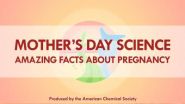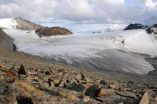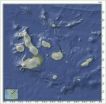(Press-News.org) WASHINGTON – A new congressionally mandated report from the National Research Council says that changes EPA has proposed and implemented into its Integrated Risk Information System (IRIS) process are "substantial improvements." While acknowledging the progress made to date, the report offers further guidance and recommendations to improve the overall scientific and technical performance of the program, which is used to assess the hazards posed by environmental contaminants.
In 2011, a Research Council committee reviewed EPA's IRIS assessment for formaldehyde and found deficiencies both in the particular assessment as well as more broadly in EPA's general assessment methods. EPA was directed by Congress to implement the report's general recommendations on the IRIS process, and the Research Council was then tasked with assessing the changes made and recommending additional modifications.
In response to the recommendations in the formaldehyde report, EPA developed a new document structure, added a standard preamble to all assessments that describes the IRIS process, drafted a handbook that provides a more detailed description of this process and its underlying principles, formed chemical assessment support teams to oversee the process and ensure consistency, and increased opportunities for stakeholder input.
The Research Council committee that wrote the new report found the improved documentation better organizes and streamlines IRIS assessments, and the preamble is useful although it doesn't fulfill the need for a description in each assessment that indicates how the general principles are applied. The report recommends that the handbook be peer-reviewed, that IRIS assessments clearly identify the members of all teams involved, and that outside experts be engaged when needed. It adds that EPA should provide technical assistance to stakeholders who might not have the resources to provide input into the IRIS process.
EPA's progress indicates that the agency is incorporating principles of systematic review, a method for synthesizing scientific evidence that focuses on a specific question and uses predefined methods to identify, select, assess, and summarize the findings of the full body of literature relevant to the question. The committee agreed that using this approach would strengthen the IRIS process, and used published systematic-review standards as a reference point to evaluate the changes that EPA has made.
A major challenge for EPA in problem formulation is determining which adverse health outcomes should be evaluated in a specific IRIS assessment, the report says. The committee suggested a process that includes conducting a broad literature search, creating a table that organizes the lines of evidence and possible health outcomes, and then examining the table to decide which outcomes warrant a review. Once a systematic-review question is specified, a protocol should be developed that makes the methods of the review transparent.
The protocol should include descriptions of the literature search strategy for each question and explicitly state the criteria for including or excluding studies, and should be reviewed by an information specialist. Such a standardized search strategy is essential for evidence identification, the report says. EPA has also implemented a standardized approach to evaluating evidence, and while it correctly identifies attributes that can be used to judge study quality, it does not describe how it plans to assess the risk of bias in the identified studies. The committee did not recommend any specific approach to assessing bias, but said that the approach chosen by EPA and its results should be fully described and reported in the IRIS assessment.
After systematic review is completed, an IRIS assessment must combine all the individual lines of evidence to come to a judgment about whether a chemical is hazardous to human health, a process the committee referred to as "evidence integration." EPA currently relies on a guided expert judgment process for evidence integration. EPA should either make this process more transparent if it chooses to continue using this approach or adopt a structured process for evidence integration. EPA should also develop templates for narrative justifications of the evidence integration process and its conclusions, and work to ensure that its guidelines for integration are uniform for cancer and noncancer outcomes, the report says.
In addition to hazard identification, IRIS assessments derive toxicity values for given substances when data allow. The committee was encouraged by the improvements that EPA has made in this area, particularly the shift away from choosing one study as the "best" study for deriving a toxicity value and toward deriving and graphically presenting multiple candidate values. EPA, however, should develop formal methods for combining results of multiple studies and selecting the final IRIS values with an emphasis on achieving a transparent and replicable process.
To ensure that the IRIS program provides the best assessments possible, the committee recommended that EPA develop a plan for strategically updating its methodology, systematically addressing any identified inefficiencies, and continually evaluating whether the IRIS teams have the appropriate expertise and training.
INFORMATION:
The study was sponsored by the U.S. Environmental Protection Agency. The National Academy of Sciences, National Academy of Engineering, Institute of Medicine, and National Research Council make up the National Academies. They are private, independent nonprofit institutions that provide science, technology, and health policy advice under a congressional charter granted to NAS in 1863. The National Research Council is the principal operating arm of the National Academy of Sciences and the National Academy of Engineering. For more information, visit http://national-academies.org. A committee roster follows.
Contacts:
Lauren Rugani, Media Relations Officer
Chelsea Dickson, Media Associate
Office of News and Public Information
202-334-2138; e-mail news@nas.edu
http://national-academies.com/newsroom
Twitter: @NAS_news and @NASciences
RSS feed: http://www.nationalacademies.org/rss/index.html
Flickr: http://www.flickr.com/photos/nationalacademyofsciences/sets
NATIONAL RESEARCH COUNCIL
Division on Earth and Life Studies
Board on Environmental Studies and Toxicology
Committee to Review the IRIS Process
Jonathan M. Samet1 (chair)
Professor and Flora L. Thornton Chair
Department of Preventive Medicine
Keck School of Medicine, and
Director
Institute for Global Health
University of Southern California
Los Angeles
Scott Bartell
Associate Professor of Public Health, Statistics, and Epidemiology
University of California
Irvine
Lisa Bero
Professor
Department of Clinical Pharmacy
School of Pharmacy and Institute for Health Policy Studies
University of California
San Francisco
Ann Bostrom
Weyerhaeuser Endowed Professor of Environmental Policy
Daniel J. Evans School of Public Affairs
University of Washington
Seattle
Kay Dickersin1
Professor,
Director, Center for Clinical Trials, and
Director, United States Cochrane Center
Bloomberg School of Public Health
Johns Hopkins University
Baltimore
David C. Dorman
Professor of Toxicology
College of Veterinary Medicine
North Carolina State University
Raleigh
David L. Eaton1
Dean and Vice Provost of the Graduate School, and
Professor of Environmental and Occupational Health Sciences
University of Washington
Seattle
Joe G.N. Garcia1
Professor of Medicine, and
Senior Vice President for Health Sciences
Arizona Health Sciences Center
University of Arizona
Tucson
Miguel Hernan
Professor of Epidemiology and Biostatistics
Department of Epidemiology
Harvard School of Public Health
Boston
James S. House1,2
Angus Campbell Distinguished University Professor of Survey Research, Public Policy, and Sociology
Survey Research Center
Institute for Social Research
University of Michigan
Ann Arbor
Margaret M. MacDonell
Program Manager
Environmental Science Division
Argonne National Laboratory
Argonne, Ill.
Richard P. Scheines
Professor of Philosophy and Head
Department of Philosophy
Carnegie Mellon University
Pittsburgh
Leonard M. Siegel
Director
Center for Public Environmental Oversight
Mountain View, Calif.
Robert B. Wallace1
Professor and Irene Ensminger Stecher Professorship in Cancer Research
Department of Epidemiology, and
Director, Center on Aging
College of Public Health
University of Iowa
Iowa City
Yiliang Zhu
Professor
Department of Epidemiology and Biostatistics
College of Public Health
University of South Florida
Tampa
STAFF
Ellen K. Mantus
Staff Officer
1 Member, Institute of Medicine
2 Member, National Academy of Sciences
Substantial improvements made in EPA's IRIS Program, report says
2014-05-06
ELSE PRESS RELEASES FROM THIS DATE:
More support needed for teaching swimming in schools
2014-05-06
Britain could become a nation of non-swimmers if drastic changes aren't made to ensure all young people have access to adequate lessons and facilities, according to academics at the University of East Anglia (UEA).
Dr Craig Avieson and Dr Penny Lamb, of UEA's School of Education and Lifelong Learning, warn swimming provisions are falling to secondary physical education (PE) teachers, with 51 per cent of British children aged 7-11 unable to swim 25 metres. Children should be able to swim at least that length by the time they leave primary school, under curriculum requirements ...
Are we ready for contact with extraterrestrial intelligence?
2014-05-06
The SETI project scientists are known for tracking possible extraterrestrial signals, but now they are also considering sending messages from Earth telling of our position. A researcher from the University of Cádiz (Spain) questions this idea in view of the results from a survey taken by students, revealing the general level of ignorance about the cosmos and the influence of religion when tackling these matters.
The Search for ExtraTerrestrial Intelligence (SETI) project is an initiative that began in the 70s with funding from NASA, but that has evolved towards the collaboration ...
Mother's Day science: Reactions highlights amazing facts about pregnancy -- video
2014-05-06
WASHINGTON, May 6, 2014 — Pregnant women go through a lot to bring a baby into this world: 2 a.m. food cravings, hypersensitivity to certain smells and morning sickness, not to mention labor and delivery. In honor of Mother's Day, the American Chemical Society's (ACS') newest Reactions video highlights the chemistry behind a pregnant woman's altered sense of taste and smell, how mom's diet influences baby's favorite foods and other pregnancy phenomena. The video is available at http://youtu.be/Gnqjh-L4e9g
And because moms always deserve more, we've created a bonus video ...
State of the nation's egotism: On the rise for a century
2014-05-06
ANN ARBOR—Forget the "me" generation. A new analysis of long-term trends in egotism shows there's been a "me" century in America.
The analysis, conducted by researchers at the University of Michigan, shows that characteristics related to self-interest, compared to interest in the lives and needs of other people, was low during the 19th century but rose steadily after the turn of the 20th century.
"We found that self-interest tends to peak after economic booms," said William Chopik, a doctoral candidate in psychology at U-M and first author of the paper just published ...
Snacking contributes to fatty liver and abdominal obesity
2014-05-06
Researchers from The Netherlands found that snacking on high-fat and high-sugar foods was independently associated with abdominal fat and fatty liver (hepatic steatosis). According to the study published in Hepatology, a journal of the American Association for the Study of Liver Diseases, hypercaloric diet with frequent meals increases intrahepatic triglyceride content (IHTG) and fat around the waist, but increasing meal size did not.
Obesity is a global health concern with the World Health Organization reporting that more than 200 million men and close to 300 million ...
Scientists challenge FIFA: Save the 3-banded armadillo
2014-05-06
New research in Biotropica asks FIFA to follow through with its environmental claims. The 2014 FIFA (Fédération Internationale de Football Association) World Cup will be played in Brazil. Its "Football for the Planet" program aims to monitor greenhouse gasses, provide environmentally friendly stadiums, and better waste management. However, FIFA has not maximized this opportunity. In an article published in the upcoming issue, researchers challenge the role that FIFA and the Brazilian government play in protecting the environment, asking both to: protect 1,000 hectares ...
Mobile health apps lack behavior-change techniques
2014-05-06
Behavior-change techniques are not well represented in the marketing materials for top-rated physical-activity apps, according to a team of Penn State researchers.
They also found that two types of physical-activity apps are available on the market -- those that focus on educating users on how to perform different exercises and those that focus on supporting users' motivation for physical activity.
"The app marketplace is largely unregulated and users make decisions based on developers' descriptions of apps," said David Conroy, professor of kinesiology. "Our results ...
$200 bird scaring line for trawlers can cut albatross deaths by over 90 percent
2014-05-06
The sight of seabirds following trawlers in order to feast from discarded fish is a common maritime sight, but each year many thousands of seabirds are killed by overhanging cables or in nets. New research in Animal Conservation assesses mortality figures from South Africa to show that a simple bird scaring line can reduce the mortality rate by over 90%.
The research compiled data from five years of observations to compare current and historic mortality rates. Previous research shows that in 2006 approximately 18,000 seabirds were killed each year by the South African ...
The first globally complete glacier inventory has been created
2014-05-06
Thanks to the efforts of an international group of scientists – one of them is Tobias Bolch from Technische Universität Dresden, Germany - who have mapped all of the world's glaciers, glaciologists can now study with unprecedented accuracy the impacts of a changing climate on glaciers worldwide, and determine their total extent and volume on a glacier-by-glacier basis. Overall, glaciers cover an area of about 730,000 km2 and have a volume of about 170,000 km3. The scientists found nearly 200,000 of them, but they say that this is the least important result of the mapping ...
How have changing sea-levels influenced evolution on the Galapagos Islands?
2014-05-06
VIDEO:
This movie is a simple 0 m to -210 m geographical loop sequence at 5 m increments. Important features are the substantial gaps between Galapagos' "core " islands even at -100...
Click here for more information.
The Galapagos Islands have an iconic status in the history of evolutionary study, now new research shows that the islands' own geological past may have influenced the evolution of the chain's native species.
Writing in the Journal of Biogeography, ...




